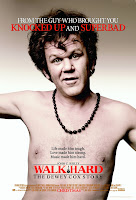 To Each His Cinema (2007)Rating:
To Each His Cinema (2007)Rating: 7.4
Open-air Cinema (Raymond Depardon)
One Fine Day (Takeshi Kitano)*
Three Minutes (Theo Angelopoulos)
In the Dark (Andrei Konchalovsky)
Diary of a Moviegoer (Nanni Moretti)
The Electric Princess House (Hsiao-hsien Hou)*
Darkness (Jean-Pierre and Luc Dardenne)
Anna (Alejandro González Iñárritu)**
Movie Night (Yimou Zhang)*
Le Dibbouk de Haifa (Amos Gitai)
The Lady Bug (Jane Campion)
Artaud Double Bill (Atom Egoyan)*
The Foundary (Aki Kaurismäki)
Upsurge (Olivier Assayas)*
47 Years Later (Youssef Chahine)
It's A Dream (Ming-liang Tsai)*
Occupations (Lars von Trier)*
The Gift (Raoul Ruiz)
Cinéma de Boulevard (Claude Lelouch)*
First Kiss (Gus Van Sant)
Cinéma Erotique (Roman Polanski)
No Translation Needed (Michael Cimino)
At the Suicide of the Last Jew in the World in the Last Cinema in the World (David Cronenberg)
I Travelled 9000 km To Give It To You (Kar Wai Wong)*
Where Is My Romeo (Abbas Kiarostami)*
The Last Dating Show (Bille August)
Awkward (Elia Suleiman)
Sole Meeting (Manoel de Oliveira)
A 8 944 km de Cannes (Walter Salles)
War In Peace (Wim Wenders)*
Zhanxiou Village (Kaige Chen)*
Happy Ending (Ken Loach)
Absurda (David Lynch)
World Cinema (Joel and Ethan Coen)








.jpg)








































